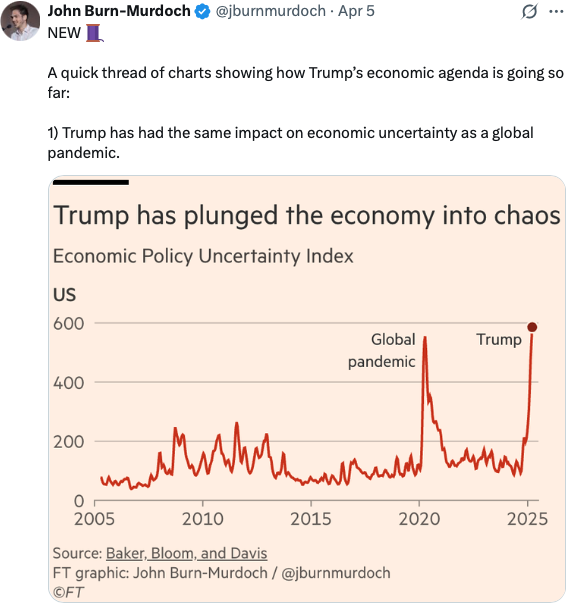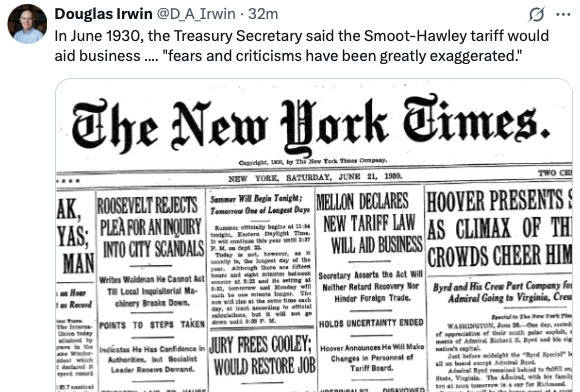People are stunned, confused, concerned. at what the Toddler-in-Chief is doing to world trade. They're asking:
What's the president's end-game here?
What's he after?
Is it just a child seeking attention?
Or is there a point to all this?
One clue would be what was gained from the similar game-playing in his first term ...
You don't need to wait to see what will happen. Trump's tariffs have already had a chance, and they've failed, explains Timothy Taylor.President Trump set off a wave of protectionist trade policies about seven years ago, back in 2018, and those policies were mostly extended and followed during President Biden’s term of office as well.So we can already measure the results from Trump 1.0. And, who would have thought ...[U]nsurprisingly to most economists, trade restrictions have done a poor job of producing the desired results. ..
Those "desired results" being those desired (or claimed to be desired) by Trump 1.0 and his protectionist advisors and cronies.
Apart from making tariff threats for geopolitical ends ("Give us Greenland or feel our trade wrath") America First's protectionists claimed there to be three specific economic benefits from their economic protectionism:Studying the results since Trump 1.0, it's clear that all three are dead on arrival.
- more US jobs in manufacturing;
- reducing US economic ties with China; and
- reducing the trade deficit.
Taking them one at a time.1. American manufacturing employment has been declining ever since WWII. If anything however, it accelerated under Trump's tariffs. Why?Oops!As [one economist] points out, there are several effects of trade barriers on US manufacturing jobs: a certain domestic industry is protected against competition, but higher prices in that industry can lead to problems for other domestic industries, and foreign countries may retaliate by shutting out US-produced exports. Put these together, and [this] suggests that the Trump tariffs of 2018 may even have led to a reduction in US manufacturing jobs.2. Even while Americans were taxed to trade with China (which is what a tariff does) US trade with China has remained steady for more than a decade. "[S]even years of protectionism has not led to any meaningful drop in China’s value-added share." But it has led to Americans paying more for their goods.
3. The 'current account deficit' is the broadest measure of the trade deficit, explains Taylor. And was thus reduced by Trump's tariffs? Answer:This measure also doesn’t change much in the years after the Great Recession, and then gets much worse [sic] during the pandemic. In short, seven years of protectionism hasn’t “fixed” the trade deficit, either.[T]he main point is simply that judged in terms of its own main justifications, the surge of protectionism since 2018 has not been achieving its goals.Who would have thought it. Trump's not playing 4-d chess. He's playing 2-d Go-Fish. And losing.
One can of course offer reasons for this failure. A common pattern in politics–and not just in trade issues–is that the failure of past policies to achieve their stated goals then becomes a new justification for more of the same. In this case, the failures of past protectionism become a reason for additional protectionism.
As one example. after Trump renegotiated the North American Free Trade Agreement (NAFTA) back in 2018, transforming it into US-Mexico-Canada Agreement (USMCA), he said in his press conference: “Once approved by Congress, this new deal will be the most modern, up-to-date, and balanced trade agreement in the history of our country, with the most advanced protections for workers ever developed.” Seven years later, Trump now apparently views the agreement that he renegotiated and lauded as a failure, and promises to dial up tariffs against Mexico and Canada–along with the rest of the world–to new heights.









































